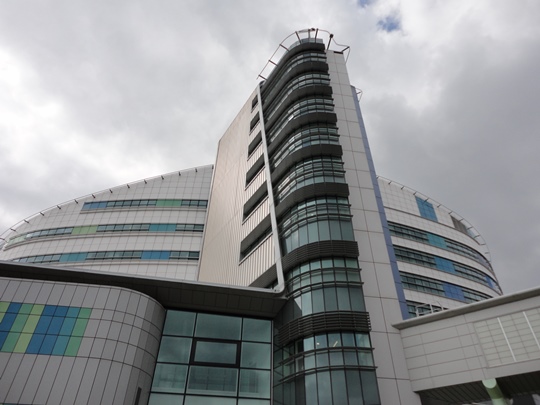
I have been visiting a lot of NHS hospitals recently, as part of research for EHI Intelligence’s forthcoming ‘Routes to EPR’ report. The results of that are due next month, although there are a few tasters in this EHI news article. But I can offer some conclusions – on NHS hospitals as places.
They vary greatly, but there are some recurring themes. Firstly, NHS hospitals are remarkably open places. The NHS constitution says that the NHS belongs to the people, and the people can pretty much wander straight in, in the way that isn’t true of schools or council offices. There are reception desks, but without the accompanying barriers you find in most workplaces. In practical terms, it probably makes more sense to secure a few areas rather than the whole hospital; otherwise, staff would spend a lot of staff collecting visitors to wards. But even so, it’s striking.
This openness does provide a great opportunity for visitors to get a bit lost. Sometimes this is due to the tendency of NHS hospitals to grow Portakabin* tendrils – Papworth Hospital, which is waiting for a government decision on whether it moves to a new PFI hospital on the Addenbrooke’s site in south Cambridge, is a prime example of that. The Royal Free in Hampstead is a single building, but (according to a poster on one of the many stairwells I traversed) has six miles of corridor, more than Bluewater… and the Royal Free Charity is developing an iPhone app to help people find their way around.
The buildings are functional, rather than beautiful (with a few shining exceptions, such as the new Queen Elizabeth Hospital in Birmingham – above – which I’ve written about before). The Royal Free, Addenbrooke’s and Birmingham Heartlands belong to the concrete lump school of 1960s architecture. But for each of the four large hospitals mentioned, the main reception is clearly a public space, with shops and places to eat as well as people – often volunteers – ready to offer much-needed directions. These areas can feel more like shopping malls – slightly scruffy ones with scuffed lino in most cases, although the new QEH is more like Birmingham’s airy Bullring centre, famous for its metal disc coated Selfridges. Unlike shopping malls, however, you are not welcomed just so you can spend money – although there are shops, often high street names, they don’t dominate.
I am also happy to report that the executive offices of hospitals tend to be only slightly nicer than the rest of the buildings – and sometimes are indistinguishable. This is not true of many organisations.
There are some wonderful new NHS hospitals, with a few more in the pipeline. But old or new, they have a special feel: they are public spaces where people are welcome, rather than distractions to be corralled in reception. I have previously drawn parallels between the NHS and religion; on that basis, NHS hospitals are like the cathedrals that welcome visitors with cafés and visitor centres, concerts and events. NHS hospitals, at least, belong to the people.
* Portakabin does not like its trademarked brand name being used as a generic word for temporary buildings. However, it is a supplier to Papworth Hospitals (and other NHS hospitals), so these really are Portakabin tendrils.

One thought on “A rough guide to NHS hospitals”
Comments are closed.